Recovery Resources
Austin Addiction Recovery Resources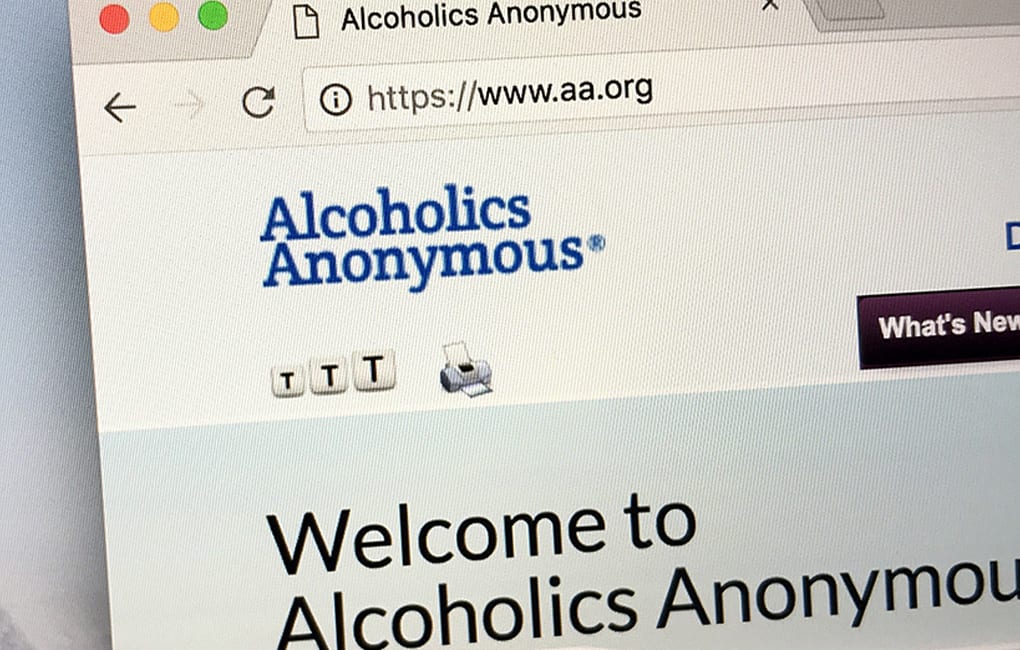
Alcoholics Anonymous in Austin, TX
What is Alcoholics Anonymous?
Alcoholics Anonymous (AA) is a fellowship organization for people struggling with alcoholism. It is the largest alcohol support organization in the world, with a membership of over two million as of 2018. AA members include individuals from diverse socioeconomic backgrounds, cultures, values and beliefs. What every member shares in common is the desire to get – and stay – sober.
The keystone of AA is its Twelve Steps program, a set of guidelines for recovering from addiction to alcohol and other controlling substances or behaviors. The AA Twelve Steps have become the foundation for dozens of other recovery groups and have helped many people find freedom from life-controlling addictions.
The History of AA
The spark that started Alcoholics Anonymous was struck in Akron, OH in 1935. There, two recovering alcoholics, Bill Wilson and Bob Smith, had a conversation about the nature of alcoholism and how to overcome it.
Wilson, a New York stockbroker, had only recently gotten sober through the help of an outreach program called the Oxford Group, which emphasized surrender of one’s life to God as the key to right living. Work brought Bill to Akron in 1935, where he was again tempted to drink. Having discovered through his experience with the Oxford Group that fellowship with others in recovery was critical to staying sober, he reached out to a local church for help and was connected to another Oxford Group alcoholic, Dr. Bob Smith. The two men formed an immediate bond, and just a few months later, Bob, too, quit drinking for good. That summer, Bill and Dr. Bob began working together to help other alcoholics, at first meeting with them one at a time in a room in Bob’s home.
It took four years for Bill and Dr. Bob to guide 100 people to sobriety through three recovery fellowships formed during that time. Then the penning of the fellowship’s textbook, Alcoholics Anonymous, in 1939, catapulted the new organization into the limelight and resulted in an explosion of growth. This book contained the group’s philosophy for recovery from alcoholism, along with its methods, the Twelve Steps, and the personal redemption stories of a number of its members. The fellowship adopted the name of the book’s title. Thanks to some positive publicity, Alcoholics Anonymous attracted national attention and its membership took off. By the end of 1941, AA membership had jumped to 6,000. With the multiplication of members and groups, the founders found themselves dealing more often with disputes within AA groups regarding religion, publicity, and finances. Dealing with these internal disputes inspired Bill to formulate the Twelve Traditions, a set of guidelines for the operation of AA groups meant to promote their unity and preserve their purpose. The Twelve Traditions were first presented in a revised publication of AA’s textbook, in the first edition of a book now popularly known as AA’s “Big Book.”
By 1950, the numbers had skyrocketed to 100,000 worldwide members, and AA’s first international convention was held. Alcoholics Anonymous has grown steadily since, penetrating barriers of race, creed and ideology few such programs have. The Twelve Steps and Twelve Traditions remain as the foundation of AA, their content neatly summarized in this quotation from the Big Book: “Trust God, clean house, help others.”

The Twelve Steps
Today it’s close to impossible to be an alcoholic or drug addict in recovery and not be familiar with the 12 Steps of AA. These steps, which outline how to overcome life controlling addictions and make life manageable again, are ubiquitous. And with good reason. These steps have helped hundreds of thousands regain control of their lives and repair their relationships. The Steps are as follows:
-
We admitted we were powerless over alcohol—that our lives had become unmanageable.
-
Came to believe that a Power greater than ourselves could restore us to sanity.
-
Made a decision to turn our will and our lives over to the care of God as we understood Him.
-
Made a searching and fearless moral inventory of ourselves.
-
Admitted to God, to ourselves, and to another human being the exact nature of our wrongs.
-
Were entirely ready to have God remove all these defects of character.
-
Humbly asked Him to remove our shortcomings.
-
Made a list of all persons we had harmed and became willing to make amends to them all.
-
Made direct amends to such people wherever possible, except when to do so would injure them or others.
-
Continued to take personal inventory and when we were wrong promptly admitted it.
-
Sought through prayer and meditation to improve our conscious contact with God as we understood Him, praying only for knowledge of His will for us and the power to carry that out.
-
Having had a spiritual awakening as the result of these steps, we tried to carry this message to alcoholics, and to practice these principles in all our affairs.

Step 1 requires that alcoholics seeking freedom admit they cannot control their drinking and that it has had a catastrophic impact upon their lives.
Steps 2 and 3 shift attention away from the helplessness and hopelessness of the alcoholic to the rescue that can come from a “Higher Power,” if the individual is willing to get out of his or her own way and surrender control.
Step 4 tackles the leviathan of denial that makes addiction recovery so difficult. Alcoholism is a selfish, destructive disease, and it’s critical that alcoholics who wish to recover honestly examine themselves and their past choices in order to understand what they have to work with in themselves and what needs to change.
The confession that takes place in Step 5 paves the way for self-forgiveness and surrender of the behaviors and attitudes that hold the alcoholic back from fully recovery (Steps 6 and 7).
The 8th and 9th Steps are about “cleaning up one’s mess”: tending to the social wreckage wrought by the addiction. Continue to carry the guilt of guilt for past wrongs is a huge impediment to recovery.
Step 10 helps alcoholics to see that they are undertaking a lifestyle change; these practices of self-evaluation and admitting wrongs must be ongoing.
The 11th Step reminds the alcoholic that the wisdom and the ability to maintain this new lifestyle comes through that Higher Power that jumpstarted the whole process.
Finally, Step 12 drives home the reality that recovery form alcoholism requires removing oneself from the center of one’s existence. In helping others, specifically other alcoholics, those in recovery are given a sense of purpose and reminded of where they’ve come from (and no longer wish to be!)
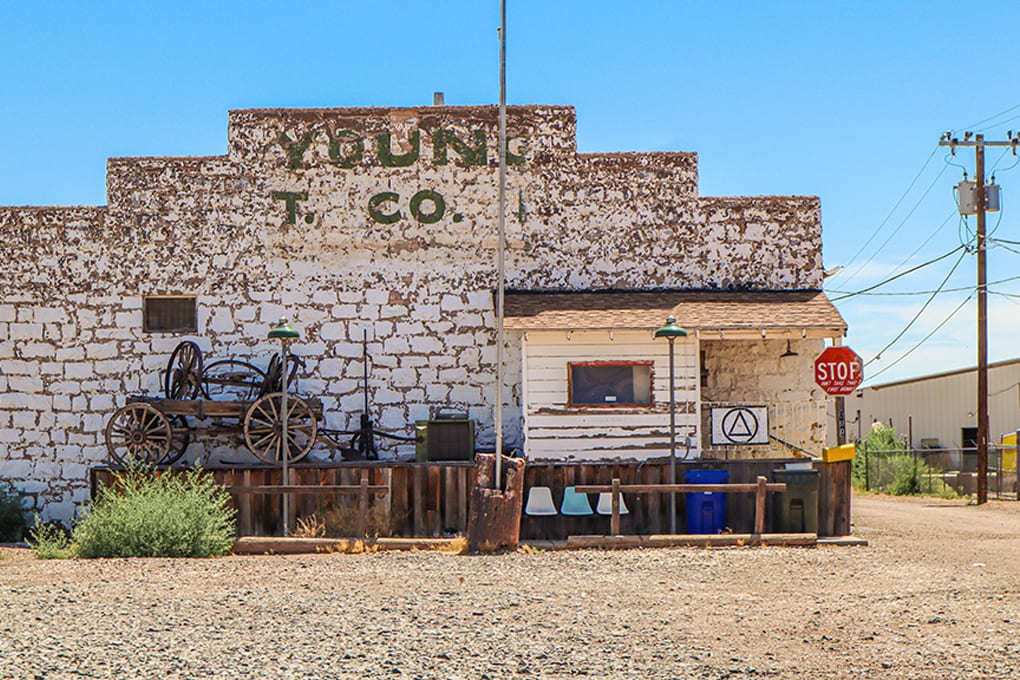
Alcoholics Anonymous Meetings
AA meetings are locally organized and locally run. It’s possible to find an AA meeting happening in nearly every city and town in the U.S. on any given day. There is the option to participate in AA meetings online as well.
Want to attend an AA meeting in Austin?
There are AA meetings specifically for teens, women, atheists and agnostics, the hearing impaired, Spanish speakers and other groups in the Austin area. The Hill Country Intergroup AA website features listings of daily and upcoming meetings near you. See the Oficina Intergrupal Hispana A.A. for assistance in Spanish.
Types of Meetings
When exploring your options for AA meetings, you will notice there are different meeting types. The two main meeting types are open meetings, which are open to both alcoholics and their guests (family members, for example), and closed meetings, which are restricted to alcoholics only.
Online meeting descriptions may also contain additional information to help you understand the format of the meeting. There are speaker meetings, where one or more chosen speakers will share at length about their addiction and recovery experiences. At discussion meetings, a chairperson usually selects a topic for conversation, and group members who wish to contribute share on that topic. Big Book meetings, as you might expect, involve reading and discussion from AA’s Big Book. Another text-based meeting is the Step meeting, where a group focuses on studying one or several of the Twelve Steps. A meditation meeting allots a certain amount of time for group members to quiet themselves through meditation before proceeding to discussion or some other activity.
What to Expect at an AA Meeting
The exact format varies from meeting to meeting, but many AA meetings commence with a cup of coffee, after which the leader will call the meeting to order. At this point, members may recite a prayer or some other affirmation. Then the group leader, or chairperson, welcomes everyone, including any new members. New members may be congratulated on finally deciding to do away with their destructive habits.
Members who have maintained their sobriety are given tokens to mark the length of their sobriety at meetings. These tokens serve as reminders for alcoholics to take recovery a day at a time and encourages them to celebrate every small victory on the road to wellness. At a discussion meeting, members might then be invited to share their stories.
It’s normal to feel apprehensive about your first meeting, for various reasons, but AA meetings are very welcoming. For starters, there are no special requirements to attend most meetings apart from a desire to get sober. You can show up wherever you are in the recovery process and be received without judgment.
Beginners are encouraged to introduce themselves and to participate but are not pressured to do so. Groups are accustomed to newcomers who want to sit and just observe for their first couple – or several dozen – meetings and are generally respectful of members’ comfort levels and preferences. You can choose to open up about your struggles or not. Either way, you’ll be welcome.
Once they’ve adjusted to the meeting format and people, most AA members find great comfort in being able to talk openly to others who can understand their struggles. Hearing others honestly admit their mistakes and try to make sense of them can help lift the cloud of shame hanging over many alcoholics, freeing them to take that risk to process their own pain with the group. It’s incredibly freeing and comforting to find you are not alone, and that others accept you, failings and all.
Don’t be discouraged if it takes some time for you to get comfortable. Participating in a recovery support group can be a frighteningly vulnerable experience for some people. If that’s you, exercise self-compassion and takes things one step at a time. You may want to try several different meetings and choose which fits best for you. Keep showing up and eventually you will settle in and be able to access AA’s tools and support to take your recovery to the next level.
To learn more about AA groups and how they function, AA’s informative brochure, “The AA Group…where it all begins” is helpful reading.
The Benefits of Alcoholics Anonymous
One of the biggest benefits of Alcoholics Anonymous meetings is captured in the expression “There is strength in numbers.” Everyone at an AA meeting is seeking the same goal: recovery from alcoholism, or some other addiction. In this environment of shared struggle and hope, there is little judgment and lots of compassion and practical help. A few reasons to give AA a shot include:
Support
Every sober addict or alcoholic knows how brutal the recovery process can be. There are terrible physiological cravings that can drive someone to relapse, along with challenging life circumstances, health issues, and social temptations. Hearing success stories at meetings, working the Steps, and talking over tough stuff with a sponsor have helped many alcoholics the strength to keep moving forward.
Furthermore, for alcholics who do not have support from their families, an AA group can become that network of people that care for you, watch out for you, and give you tough love when you need it.
Then there’s the part where you, once you begin to rediscover your strength, get to give to others in recovery who need it. Joy and a sense of purpose in serving others can become a more powerful “high” than alcohol or drugs ever were.
Education
AA literature is very instructive when it comes to the nature of addiction. AA members learn a lot about the beast they’re fighting, as well as themselves, as they work through the 12 Steps.
AA meetings also help people by exposing them to reocvery “hacks”. These hacks focus on what works and what doesn’t when it comes to sober living. Group members share coping strategies that have enabled them to stay sober, which may also work for you. Also, interacting with AA members who have relapsed but fought their way back provides a stark reminder of just how bad substance abuse can be and why it is essential to remain sober.
Free Help
Treatment centers, doctors, therapists, and other recovery resources can be expensive, especially for the un-or under-insured. AA in Austin won’t cost you a thing. Don’t make the mistake of valuing AA according to its price-point, though. In this case, “free” doesn’t equal “cheap.”
Does AA Work?
Formal research into the effectiveness of AA has yielded mixed results, largely because of the difficulty of proving causation, questions about the quality of the evidence (AA members do value their anonymity, after all), and differing definitions of what “success” looks like. A quick Google search on the subject of AA’s success rates will lead you to a multitude of studies and statistics, if you’re someone who has to “read the reviews”, so speak, before “buying” into the need for a recovery group.
But recovery support is not your next Amazon purchase. At its simplest, AA is a set of truths and a gathering of people.
Test the principles by trying them out yourself, and the value of recovery support by experiencing it, and make your own results.
As with so many other things in life, AA will be what you make of it.
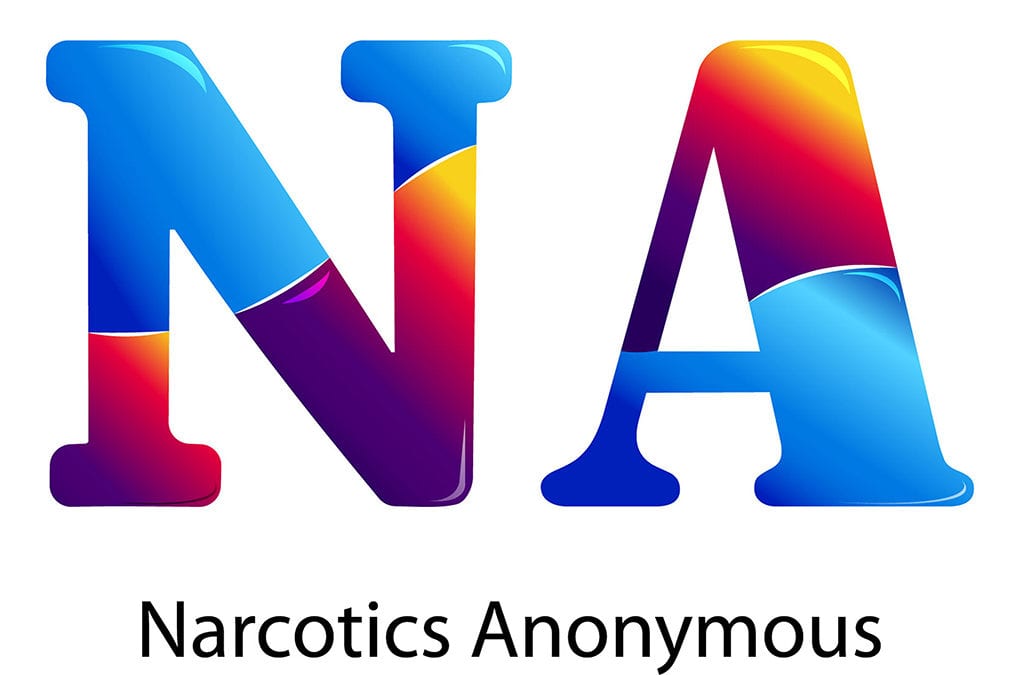
Narcotics Anonymous
Understanding Narcotics Anonymous
Narcotics Anonymous (NA) is a popular nonprofit fellowship program for men and women struggling with drug addiction. The Narcotics Anonymous (NA) 12-step program is internationally recognized as one of the most highly successful models for addiction recovery. Inspired by the success of Alcoholics Anonymous (AA) and begun by recovering drug addicts in California in 1953, this program has expanded to roughly 70,000 weekly meetings in over 130 countries. To date, NA is the second largest 12-step organization.
As with other 12 step programs, the goal of Narcotics Anonymous is to create a recovery community for those with substance abuse problems. In sharing their struggles and triumphs in the battle against their addictions, members of NA find the strength to keep fighting the good fight for a better, healthier, drug-free life.

The History of Narcotics Anonymous
The idea for Narcotics Anonymous dates back to 1944, when AA’s co-founder Bill Wilson was considering a separate fellowship for individuals suffering specifically from drug abuse. In 1947, a group devoted to recovering drug addicts called NARCO was founded. Group members met each week at the U.S. Public Service’s treatment center in Lexington, Kentucky’s federal prison. A member of the original NARCO group carried the idea of a fellowship for drug addicts to the New York Prison system in 1948, but the program there was short-lived and didn’t follow the 12 steps and traditions.
NA was formally established in 1953. At that time, Jimmy Kinnon and a group of other recovering drug addicts who were also former AA members petitioned Alcoholics Anonymous for use of its 12-step model and traditions. AA granted permission for them to do so but required that they choose a different name for their program. And so, Narcotics Anonymous was born.
Written in 1962 and published in 1996, the “Little White Book” marked the first official publication for Narcotics Anonymous. The booklet contained the 12 steps, the personal stories of some addicts, and a few other documents that would later become part of what is now NA’s Basic Text, its version of the AA’s Big Book.
There were some rocky moments in the early years of Narcotics Anonymous. For starters, NA did not enjoy the same kind of national support that AA did. Groups struggled to find places to meet, in part because an old law prohibited convicted felons from congregating. In some cases, groups were able to meet illicitly in church basements; at other times, they had to resort to gathering in members’ homes. Many NA groups were also not adhering closely to the 12 traditions in the early years. Some of the groups were accepting money from businesses and individuals outside of the association, compromising the organization’s integrity. For this and other reasons, meetings began to decline. In 1959, there was actually a four-month period during which no meetings at all were held. That low spurred Kinnon and others in NA leadership to attempt to restart NA, with the resolve that all traditions would be strictly upheld.
It was during the 1970s when NA saw the most growth. There were just 20 regular meetings across the United States in 1970, but in just two years that number shot up to 70 meetings. The organization also breached the international barrier during this period, with meetings starting up in Australia, Bermuda, and Germany. By 1976, there were about 200 registered groups, and by 1983, as many as 2,966 meetings in over a dozen countries. NA has continued to grow ever since.

How Does the Narcotics Anonymous (NA) 12-Step Program Work?
The goal of NA is to help drug addicts get from a place of hopelessness and helplessness to a place of empowerment and strength, where they are able to abstain from the substances that control them. Like AA, the program is free and emphasizes abstinence from the addicting substance, personal growth, and reliance upon a High Power.
Recovery is made possible through working the 12 Steps, through conforming to the program traditions, and through the fellowship NA groups provide.
The NA 12 Steps
The NA 12 Steps guide individuals through a recovery process that involves taking a personal inventory of flaws and failings, grabbing hold of faith, making amends for wrongs done, and serving others.
- We admitted that we were powerless over our addiction; that our lives had become unmanageable.
- We came to believe that a Power greater than ourselves could restore us to sanity.
- We made a decision to turn our will and our lives over to the care of God as we understood Him.
- We made a searching and fearless moral inventory of ourselves.
- We admitted to God, to ourselves, and to another human being the exact nature of our wrongs.
- We were entirely ready to have God remove all these defects of character.
- We humbly asked Him to remove our shortcomings.
- We made a list of all persons we had harmed, and became willing to make amends to them all.
- We made direct amends to such people wherever possible, except when to do so would injure them or others.
- We continued to take personal inventory and when we were wrong promptly admitted it.
- We sought through prayer and meditation to improve our conscious contact with God as we understood Him, praying only for knowledge of His will for us and the power to carry that out.
- Having had a spiritual awakening as the result of these steps, we tried to carry this message to addicts, and to practice these principles in all our affairs.
Because of the belief that recovery happens best in community, the Steps use the first-person, plural pronoun: we. The purpose of that pronoun is also to emphasize that personal responsibility is key to recovery: addicts must break the cycle of denial that often accompanies addiction. Members often recite these steps together in their weekly meetings, reminding themselves that they are responsible for their recoveries and at the same time, hearing the voices around them, that they are not alone.
Another key component of the 12 steps is learning to trust a higher power. NA is not affiliated with any particular religion, but like AA, it is a distinctly “spiritual” program. The NA 12 Steps encourage members to formulate their own understanding of this Higher Power upon whom they must rely for guidance and strength, if a formal faith does not already provide that for them.
Individuals work through the 12 Steps along with others, including a mentor. A sponsor is essentially a recovery mentor, who has maintained sobriety for a significant amount of time by actively following the 12 Steps. Generally, NA sponsors are of the same gender as those they are mentoring.
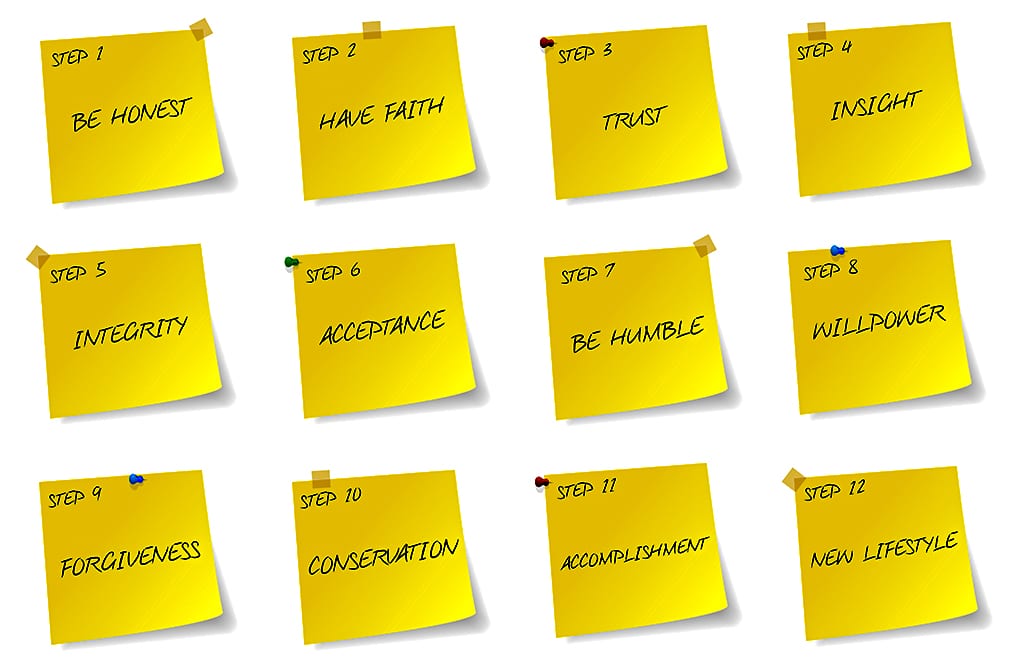
The 12 Traditions of NA
Just as the 12 Steps are guidelines for recovery for the individual, the 12 Traditions are guidelines to protect the NA group and help it thrive. Narcotics Anonymous believes that adhering to the 12 Traditions as a group helps to create the best possible environment for members to work through those 12 Steps to recovery.
The 12 Traditions are as follows:
- Our common welfare should come first; personal recovery depends on NA unity.
- For our group purpose there is but one ultimate authority – a loving God as He may express Himself in our group conscience. Our leaders are but trusted servants; they do not govern.
- The only requirement for membership is a desire to stop using.
- Each group should be autonomous except in matters affecting other groups or NA as a whole.
- Each group has but one primary purpose – to carry the message to the addict who still suffers.
- An NA group ought never endorse, finance, or lend the NA name to any related facility or outside enterprise, lest problems of money, property, or prestige divert us from our primary purpose.
- Every NA group ought to be fully self-supporting, declining outside contributions.
- Narcotics Anonymous should remain forever nonprofessional, but our service centers may employ special workers.
- NA, as such, ought never be organized, but we may create service boards or committees directly responsible to those they serve.
- Narcotics Anonymous has no opinion on outside issues; hence the NA name ought never be drawn into public controversy.
- Our public relations policy is based on attraction rather than promotion; we need always maintain personal anonymity at the level of press, radio, and films.
- Anonymity is the spiritual foundation of all our Traditions, ever reminding us to place principles before personalities.
What to Expect at Meetings
Finding an NA meeting near you is as simple as going to https://www.na.org/meetingsearch/ and searching for a meeting in your state. Austin area meeting locations, dates, and times may also be accessed on the Central Texas Area Narcotics Anonymous website (http://ctana.org). Meetings take place in a variety of places, including churches, community centers, hospitals, and even parks.
Meetings typically follow one of two formats: speaker meetings or open discussions. At a speaker meeting, one individual shares his or her personal story for most of the length of the meeting time. As you probably guessed, open discussions allow anyone who wants to share to do so. Members are asked to only share about their personal experiences, however, and not to comment on the experiences or comments of others in the group. Members are also encouraged to be conscious of the length of time they speak, so that others who wish to contribute have time to do so.
As a newcomer, you’ll notice that members only introduce themselves by their first names: this is the “anonymous” part of Narcotics Anonymous. You’ll also notice that groups members identify themselves as “addicts” as part of their introduction: “Hi, I’m Matt, and I’m an addict”. There are few rules in NA meetings, aside from the request that those present listen respectively to whomever is speaking (stay off that cell phone if you can!) and that attendees not bring any drugs or drug paraphernalia into the meetings.
Do you have more questions about NA meetings?
Click here for more information on what to expect at an NA meeting. You may also find NA.org’s An Introduction to NA Meetings to be helpful reading.
Want to familiarize yourself with NA Literature in advance of your first meeting?
Click here.
So, Does NA Work?
The first studies on recovery outcomes of NA for its members took place during the 1990s in London, England. This initial study found there to be a positive relationship between the duration of group membership and a subject’s abstinence. It also showed increased self-esteem and reduced anxiety. Other studies since have upheld the effectiveness of NA and other 12-Step programs in helping people who suffer from the disease of addiction recover their lives and self-respect. As with many behavioral health studies, more research is needed, however. Experts have rightfully pointed out an information gap for certain ethnic groups, as well as for outpatient addicts generally. Traditionally, most of the work has been focused on Caucasian recovering addicts in inpatient settings. That caveat aside, the current results from the program are highly promising.
Of course, most people in search of recovery help can’t be bothered to read study literature. It’s the anecdotal evidence that is often most compelling: the stories of people they know who have found in NA and its 12 steps and traditions the truths and fellowship they needed to break the bonds of their addictions. Treatment centers and therapists are important parts of recovery, but so too is the fellowship of other wounded soldiers willing to fight and march alongside you down the road to wholeness.
Narcotics Anonymous and its members understand a pivotal truth about addiction: there’s more to recovery than quitting the drugs. As the NA’s Basic Text reminds us, “Our disease involved much more than just using drugs, so our recovery must involve much more than simple abstinence.”
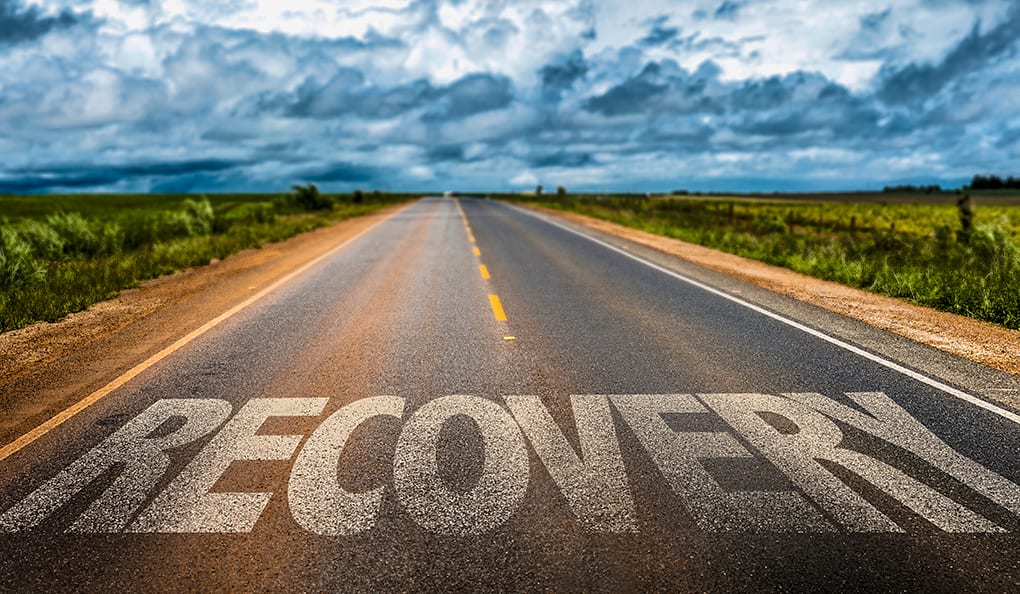
Austin-Area Addiction Treatment Options
Your Austin-Area Addiction Treatment Options
Addiction recovery is a process. Admitting to yourself that you have a substance abuse problem is the first of many important steps in that process. The next step is to find a solution to that problem. For most addicts in recovery, this means finding an effective treatment program that will help them reclaim their health and happiness.
For a person suffering from substance abuse, there are several treatment paths available. Some find that detox is the best way to get clean before going into rehab. Others begin their recovery journeys by going straight to an inpatient or outpatient facility. After formal treatment, these individuals can continue to work on recovery more independently, using the lessons learned during rehab and the support of a therapist and regular recovery meetings to stay strong and sober. Others go straight from detox into a sober home, and yet still others bypass formal treatment altogether, getting the support they need to turn their lives around by moving directly into a sober home.
The vital thing to keep in mind when it comes to addiction recovery is that there isn’t one process, path, or method of treatment that will work for everyone. And what works for each person may change over the course of the recovery journey. It’s critical to do the trial and error work that it takes to find the “right things” – and the right people to help you sort out what those “right things” are.
Below you’ll find a breakdown of some treatment options and supports available in and around Austin, Texas, where the recovery community is strong. Our hope is these resources will help you discover what works for you, what your “right things” are, and guide you to your best local help in time of need.
Treatment Programs
Inpatient Treatment Programs
Someone participating in an inpatient (residential) treatment program must live at that facility for a period of time. How long an individual might stay depends on the program and the individual’s needs. The average stay is 30 days, but many facilities offer 60- and 90-day programs as well. The overall length of a person’s stay depends on numerous factors, including the severity of his or her addiction, co-occurring mental or physical problems, and whether that person has been through rehab before.
Inpatient treatment facilities provide 24-hour care and supervision, and a structured environment where people receive substance abuse treatment alongside other individuals also in recovery. For this reason, it’s a good option for someone who is suffering from long-term addictions or heavy substance use, is addicted to multiple substances, and/or has co-occurring issues that could complicate and worsen the detoxification experience. Medical professionals are available in an inpatient setting to address the physical side of addiction recovery, from the harmful effects of drug or alcohol use to the difficulties of the withdrawal process. Therapists and psychiatrists are also present to support the mental and emotional side of recovery. Residents may participate in life skills and relapse prevention groups or classes, and in therapeutic activities designed to help them learn to cope with stress in different, healthier ways.
A growing number of inpatient facilities also provide support to recovering addicts’ families. Family programs invite the loved ones of those in recovery to participate in various activities in order to repair trust, improve communication and generally help repair dysfunctional family dynamics. Family involvement in an individual’s recovery typically leads to better outcomes.
Inpatient treatment is the most expensive addiction treatment option, with prices for a 30-day stay ranging from $2,000 to $25,000 + a day, depending on whether basic, standard, or luxury-level care and amenities are provided.
Some inpatient options in the Austin area include:
New Hope Ranch
(512) 566-3050
11908 Sparks Road, Manor, Texas 78653
admissions@newhoperanch.com
https://newhoperanch.com
Ripple Ranch Recovery Center
(855) 239-7117
2098 Texas Oaks, Spring Branch, Texas 78070
https://shadowmountainrecovery.com/location/1/ripple-ranch-recovery-center
The Treehouse
(866) 332-7439
6950 Shady Lane, Scurry, Texas 75158
info@addictioncampus.com
https://www.treehouserehab.org
The Right Step
(844) 768-0412
840 Co Road 420, Spicewood, Texas 78669
https://www.rightstep.com
You can find a more comprehensive list of inpatient addiction programs.
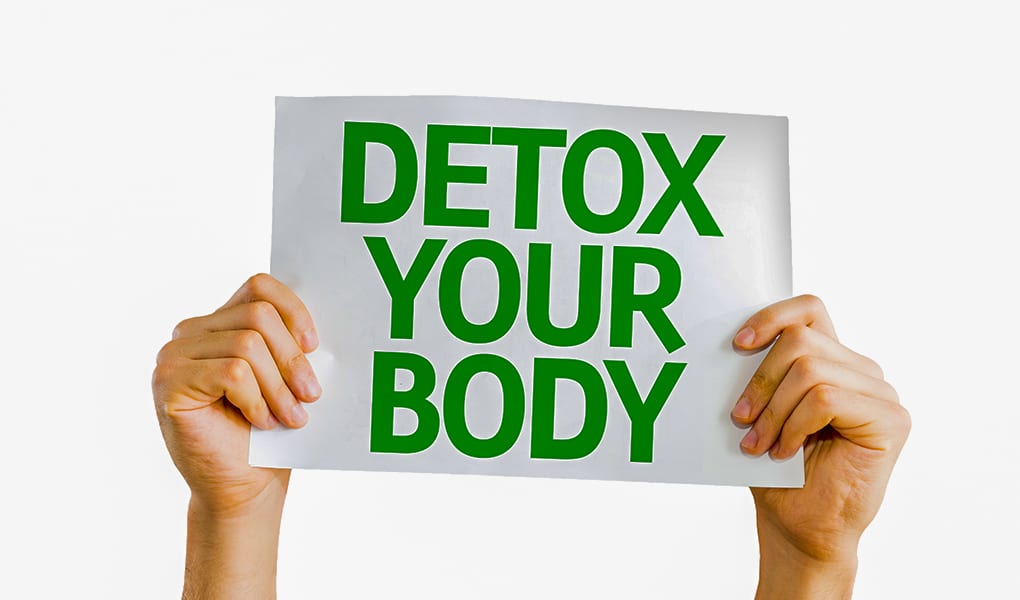
Outpatient Treatment Programs
Outpatient treatment programs require participants to come to the facility or clinic for certain hours of the day or week while maintaining residence at home during non-treatment hours. The same services that are provided in an inpatient setting are typically offered in outpatient programs as well: education; medical care; individual, group and family therapy; and psychiatric treatment. Outpatient treatment covers a range of program types with varying levels of intensity, from day programs to intensive outpatient programs (IOPs) to aftercare.
The major differences between inpatient and outpatient care have to do with the level of supervision and structure. Outpatient treatment has the advantage of enabling people to proceed with their daily lives – work, social engagement, family responsibilities, and so forth – while going through treatment. The downside of outpatient treatment is that the greater freedom allowed may lead to greater temptation to return to the places, people and things that fueled the addiction.
Outpatient drug addiction treatment is a good option for patients who have already gotten an initial grounding in their recovery at an inpatient program, or through detox, or for those who have a strong commitment to their recovery already and can rely on good support at home. The cost of outpatient care is generally less than inpatient, with price ranges varying widely based on the facility and its services, the number of visits per week, and the length of the program.
There are numerous outpatient addiction treatment options in and around Austin, including the following:
Seton Mind Institute
(512) 324-3380
Multiple Austin locations
https://www.seton.net/behavioral-health-care/seton-mind-institute/
New Hope Ranch
(512) 566-3050
11908 Sparks Road, Manor, Texas 78653
admissions@newhoperanch.com
https://newhoperanch.com
Northwest Counseling & Wellness Center
(512) 250-9355
12335 Hymeadow Drive, Suite 300, Austin, Texas 78750
https://www.ncwcaustin.com
See Sober Austin for a more comprehensive list of outpatient programs.
Detox Treatment Programs
Detoxification is the process of removing toxic substances from the body. For substance abusers, this term describes the period of time it takes for the body to clear itself of the influence of any drugs or alcohol. A detox treatment program provides individuals under the influence of drugs or alcohol with a safe place to undergo that detoxification process. Withdrawal from an addictive substance can be extremely uncomfortable, and in some cases, even dangerous, especially for those addicted to depressants or opioids. Medical personnel at a detox can oversee this detoxification process, using medications where warranted to ease the discomfort of withdrawal and ensure physical safety.
The detox process can take anywhere from a few days to several months. The length it takes depends upon a variety of factors, including the addictive substance the person was using, the length of time the person was addicted; the dosages of the substance taken; the individual’s genetic makeup, age and gender; and underlying medical and mental health issues. Most people can successfully detox within a week or so (though cravings may linger long afterwards). With that in mind, detox programs are typically 3, 5 or 7 days long, and are designed to support the individual through the initial, most difficult part of withdrawing from a substance.
Detox supports a person through withdrawal, but these treatments are not long or comprehensive enough to address the underlying emotional, psychological, social and behavioral issues that drove the addiction. For this reason, people seeking recovery from substance abuse should view detox as the first stop on a longer journey home to wholeness. An inpatient or outpatient treatment program is a good next step for those who have successfully completed a detox program.
Lonestar 24-Hour ER and Texas Star Recovery are two excellent choices for detox programs in Austin.
Lonestar 24-Hour ER
(830) 627-0911
1751 Medical Way, New Braunfels, Texas 78132
info@lonestar24hrer.com
https://www.lonestar24hrer.com
Texas Star Recovery
(512) 462-6729
1106 West Dittmar Road, Austin, Texas 78745
https://texasstarrecovery.com
For other choices, see Sober Austin’s list of facilities for Drug and Alcohol Detoxification.
Recovery Homes
When formal treatment ends, individuals in recovery can choose from various aftercare options, including a recovery home (also known as a sober living home). A recovery home serves as a bridge between rehab and fully independent living. It’s a place where residents can practice the skills they’ve learned in treatment while living in a supportive environment with others who are also in recovery.
Although a resident can freely come and go to work, social events, and other engagements while living in a recovery home, structure is still provided by strict house rules, by curfews, and by the accountability provided regarding meeting or support group attendance. House members are required to remain sober and submit to random or scheduled drug and alcohol testing to ensure compliance.
Recovery homes are ideal for gaining confidence about life back in the “real world” and for building a network of sober friends that can serve as a second family. Standards for accountability can vary from home to home, but for most the support is better than what they’d have on their own and is instrumental in staying on the right path.
Recovery homes are fairly affordable compared to formal treatment. Still, like treatment programs, costs can vary. A “residential fee” or rent is the highest associated cost, and this goes toward covering the mortgage of the house or apartment building being used for the recovery home. Residents are often responsible for their own food, gas, medications and other incidentals.
Second Chances Recovery Homes has been serving those in recovery in the Austin area for over a decade. Unlike some other recovery homes, we support the use of medication-assisted therapy for our residents and accept those with dual diagnoses. Our experienced staff are there to support men and women in recovery through the tough transition from treatment to independent sober living.
You can find a list of other Austin-area recovery homes here.
Other Recovery Supports
MAT (Medication-Assisted Treatment)
Medically or medication-assisted treatment (MAT) involves the use of medications in conjunction with counseling and various behavioral therapies to cure drug addiction. It is most effective at treating opioid abuse disorders and, in some cases, may help prevent people from relapsing. At present, the FDA has approved three drugs to treat opioid addiction: naltrexone, methadone, and buprenorphine. The popular addiction medication Suboxone is a combination of buprenorphine, a drug that relieves symptoms of opioid withdrawal, and naloxone, a drug that reverses the effects of narcotics.
The use of MAT has been shown to be highly effective in treating addiction, but there is a stigma associated with the use of some of these medications. The fear that drugs like Suboxone, for example, are merely acting as substitutes for the opioid addict’s drug of choice, have fueled much controversy over medication-assisted treatment. Certainly, MAT has its flaws, and without proper supervision, can be abused just as naysayers fear. There is a need to develop more advanced methods of addiction treatment using medication, but in the meantime, drugs like Suboxone are often better than no medication-assistance at all for the addict who is struggling to break the cycle of drug abuse.
Click here to learn more about Suboxone and the value of MAT in addiction recovery.
12 Steps Meetings
The 12 Steps were originally created by the founders of Alcoholics Anonymous as principles to help establish a basis for recovery from alcohol addiction. The program was highly successful during its early years, inspiring other addiction recovery support groups such as Narcotics Anonymous and Overeaters Anonymous to adapt the program or steps for their own uses.
Today there are 12-step programs for many types of addictions and compulsive behaviors. These programs have helped people from varied backgrounds, classes, and belief systems. Though the 12 Steps rely heavily on Judeo–Christian spirituality, the program has proven useful even for atheists and agnostics. Its insights into human nature, the power of vulnerability and connection, and the realities of addiction have enabled it to transcend barriers and help millions worldwide overcome their addictions.
Twelve Step meetings are usually organized locally. Members meet on a regular basis, often in churches or community centers, and discuss the Twelve Steps and related literature while also sharing personal stories of failure and success in their recoveries.
Getting over any type of addiction requires encouragement, support, and, most of all, accountability – and that’s where the 12 Steps shines. Addicts are supported in 12 Step meetings by people who are like them and have overcome (or are still overcoming) addiction. The sponsorship model promoted by the 12 Step Program, where new members are mentored by others further along in their recovery, has been instrumental to the success of the 12-Steps in helping addicts get and stay clean.
There are many 12-Step meetings in Austin. Click here to find the 12-Step meeting that is right for you.
Other Support Groups
The 12-Steps may be one of the most popular support group models out there, but it’s by no means the only one. Here are a few non-12 Step options:
- SMART (Self-Management and Recovery Training) Recovery is a non-12 step support group that uses a four-point program to help those struggling with addiction reclaim their lives. It focuses on 1.) Building and maintaining the motivation to change, 2.) coping with urges to use, 3.) managing thoughts, feelings and behaviors without turning to addictive substances, and 4.) living a balanced, health, and positive life. SMART touts itself as secular and science-based.
- Moderation Management takes an unusual approach in that it does not require abstinence for its group members. It targets drinkers in the early stages of their alcoholism, when the disease has not yet become intractable, and changing behaviors to encourage moderate alcohol intake are perhaps still possible. Many MM members go on to 12 Step or other abstinence-based programs, but some people find Moderation Management as less threatening first step toward recovery.
- Women for Sobriety specializes in the needs of women in recovery. Its program uses 13 acceptance statements to help women re-wire their brains and overcome self-destructive thoughts and beliefs that drive their addictions. WFS promotes the idea that if a more positive self-image will lead to better life choices.
A list of 12-Step alternatives in Austin, Texas, can be found here.
Click here for Moderation Management meetings in Austin.
Addiction Therapists
Addiction therapists are counselors who specialize in helping their patients to overcome drug and alcohol dependencies as well as other self-destructive habits such as disordered eating or gambling. These therapists assist patients in identifying the underlying problems driving their addictions and in developing healthier habits and coping mechanisms. They can provide progress reports to courts, refer patients to support groups, and set up aftercare plans. Some addiction therapists may also support patients in their pursuit of life and career goals.
Carma Health has a team of therapists available for those who utilize their healthcare services.
CARMAhealth (512) 212-4670
630 West 34th Street, Austin, Texas 78705
austin@carmahealth.com
https://carmahealth.com/
Joe Dias has served many recovering addicts, including Second Chances Recovery Homes residents.
Joe Dias Counseling Services
(512) 439-9808
mr.dcounseling@gmail.com
https://sites.google.com/site/joediascounselingservices/
For a list of other addiction therapists in the Austin area, click here.
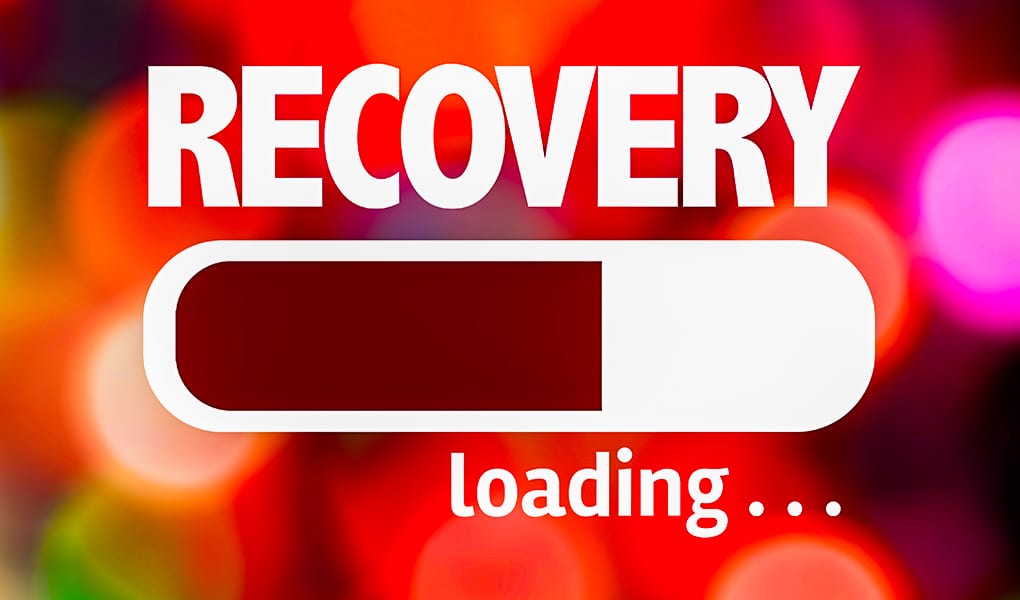
Recovery Coaches
Recovery coaches are another powerful tool for your recovery toolbox. In the sports world, a coach comes alongside a player and advises and encourages, helping that athlete to reach his or her potential. A recovery coach operates the same way, except that his or her focus is on supporting people in their addiction recovery. Recovery coaches have often been through addiction recovery themselves and are, therefore, able to offer guidance and encouragement from their personal experiences. Like a therapist, a recovery coach often assists in developing a wellness plan and connects the recovering addict with helpful resources. Although recovery coaches may give offer advice, they are not licensed therapists, and are not qualified to provide formal counseling. They function more as personal cheerleaders through the recovery process.
There are many excellent recovery coaches in the Austin area, including the following:
Recovery coaches with Communities for Recovery
4110 Guadalupe St., Bldg. 635, Austin, Texas 78751
512-758-7686
info@cforr.org
https://cforr.org
Wayne Johnson (with Communities for Recovery)
wayne.johnson@cforr.org
(512) 954-0070
Darrin Acker (with Communities for Recovery)
(512) 818-7557
dacker@cforr.org
Recovery coaches with Action Wellness Group
https://www.actionswellness.com
(512) 955-4364
For a more complete list of recovery coaches in Austin, Texas, click here.
Conclusion
There are a lot of choices when it comes to treating addiction. Some self-knowledge and advice from therapists, family and medical professionals are instrumental in helping the addict on the brink of recovery to determine the best course for him or her.
Keep in mind that it is never a good idea to go “cold turkey” and detox your body without medical supervision. Put yourself in the best possible position to avoid relapse or a medical crisis by entering a detox program or an inpatient program (these typically include a detox phase). It’s also worth pointing out that very few people, if any, have ever successfully kicked an addiction on their own. Reach out for the support you need to make genuine, lasting changes.
Above all, do not allow the multitude of options to paralyze you. Sometimes you simply have to take a step – any step – and things become clearer from there.

